Many people are interested in growing their own crops in raised beds for good reasons.
Not only will it cut your monthly grocery expenses, but home-grown crops ensure that what you eat is safe from any hazardous chemicals. Growing your own crop is a rewarding activity, and it is not too difficult to do.
If you have a raised bed to grow your own vegetable garden in, the soil will warm up much faster in spring, given the fact that its structure is above average ground level. This gives an advantage to young plants.

The soil in a raised bed is also easier to monitor and fertilize, not to say that they beautify your garden, too.
If you just started to engage in this activity, we will help you decide which vegetables are best to grow in a raised bed through the list we provided below.
Table of Contents
1. Arugula
Arugula is a salad green that has very small seeds, which is why it is easy to lose during the planting process. To guide you better, create a small space in the garden where you would plant your Arugula in.
Arugula needs a smooth soil. To plant, simply sprinkle the tiny seeds evenly on the top of the soil, then pat it gently before watering it slightly. Like other salad greens, arugula grows better in a temperature that is a little bit cool.
If you want a sweeter-tasting salad green, harvest arugula while it is still young. If you want it to be spicy, harvest it once it fully matures.
Arugulas that grow during the warm season may taste bitter, although its flowers can still be eaten.
2. Beets
Beets thrive in a raised bed. Since this vegetable needs a little space to grow, you need to plant the seeds at about two to three inches apart.
For them to grow big enough, make sure that the raised bed is at least 12 inches deep, but sow them no more than an inch deep. Beets should be watered well, and they should not rest on soggy soil.
Plant the seeds at two-week intervals until June, then you will be able to pick them over several months. Beets are quick to mature. In about 60 days, they can already be harvested.
If you prefer a sweeter beet, harvest them when they’re about at golf-ball size. You may also try different varieties, such as the golden and the Chioggia varieties.
Beets make a great addition to your salad. They can also be pickled, or can be added to your sandwiches.
3. Bok Choy
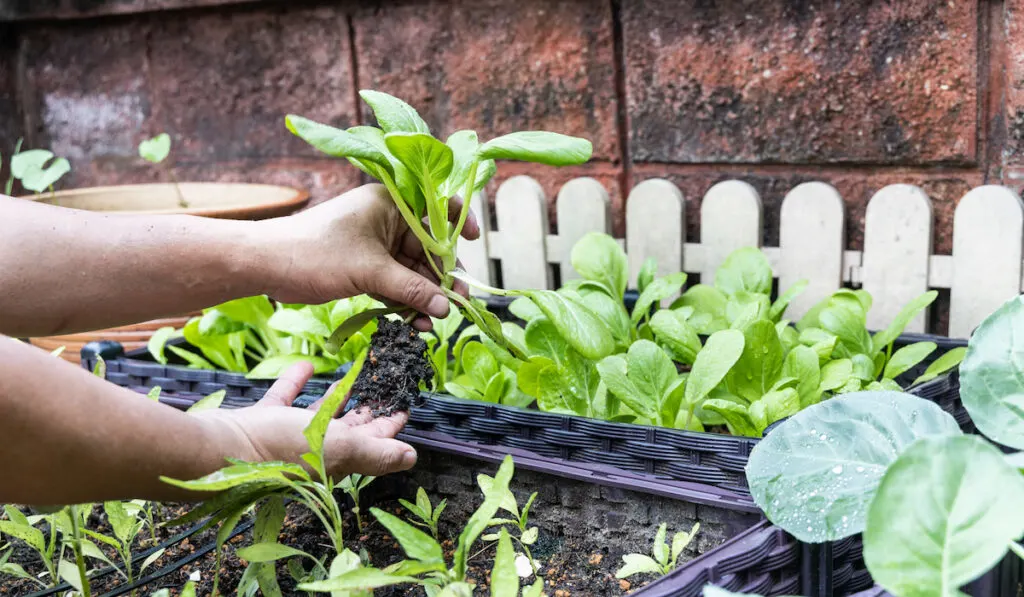
Bok Choy is a quick-growing vegetable which does not want to share space with weeds, thus making it an ideal vegetable to grow in raised beds.
Bok choy thrives in a rich, loose soil. It is a cool-weather vegetable that can be grown into late fall.
It is mostly used in Chinese cuisines, and can be stir-fried, grilled, or steamed. It can also be added to soups and salads.
4. Carrots
Perhaps one of the most highly available vegetables all over the world, carrots are sweet, juicy, and crunchy vegetables that can be grown in a raised bed.
Raising carrots in a stony soil is difficult because it will cause them to ‘fork.’
In addition, carrot fly can only fly very near the ground, therefore growing carrots in a raised bed is a good way to prevent carrot flies from damaging your crop.
Plant their seeds from April to early July, and you’re ready to harvest them after a couple of months.
There exist many varieties of carrots for you to choose from, such as white, yellow, and purple. However, every variety has different needs.
In general, you can plant about 18 carrots in a square foot. The seeds of this vegetable are very tiny; thus, you will only need to sow them about ¼ inch deep.
Water the seeds gently to make sure that they’re not washed away.
Carrots make your stews, salads, and other dishes tastier and sweeter. Because it is a nutritious and sweet vegetable, it can also be added to your healthy smoothie.
5. Celery
There are various ways to raise celeries. You can grow them from seed, by starter plants, or by re-growing them from a bunch of celery.
Because of this crop’s shallow root system, it makes an ideal vegetable to grow in raised beds.
Celery thrives in cooler weather, and they need abundant water and compost to ensure that they grow well. However, make sure that they don’t sit in soggy soil. Otherwise, their roots will start to rot.
Once you establish the celery, you can harvest from the plant continuously.
Celeries can be used to make flavorful stocks. They can also be added to your stews, salsa, and tacos.
6. Chard
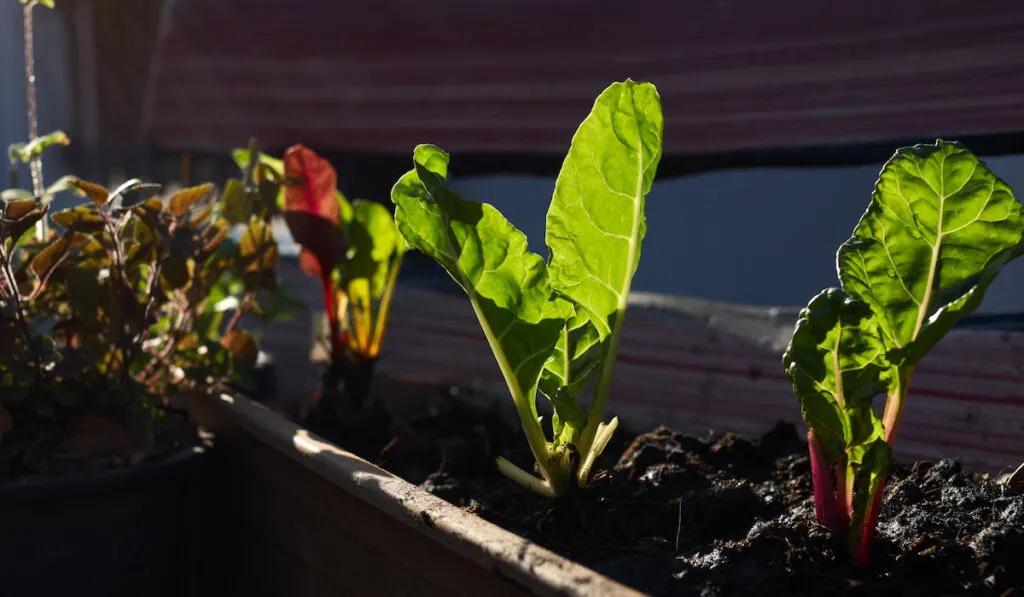
Chard, also called leaf beet, is an easy-growing vegetable and a perfect choice to grow in a raised bed. It is a leafy vegetable that comes in a variety of colors, including creamy white, yellow, purple, and pink.
Chard thrives in sunny weather, with soil that is rich and soft. Plant the seeds from April to August. Once the plant is fully established, you can treat it as a cut-and-come-again crop.
Chard makes a great addition to your salad, and can also be chopped up and cooked in butter. It can also serve as a side to main dishes.
7. Courgettes
If you’re looking for a vegetable that can provide you with generous crops, then courgettes are a good choice. One plant of this vegetable can give you a good amount of courgettes a week.
In April, plant the seeds indoors. Then, take them outside once the seedlings are big and sturdy enough to handle. After eight weeks, you can harvest the courgette.
You can also save some space by using the trailing variety instead of letting the plant creep along the ground.
Courgettes can be used to make fresh salads and soups. It also makes healthy additions to your pizza, loaf bread, and sides.
8. Cucamelons

If you don’t have enough space to grow cucumbers, cucamelon is a good choice. It looks like a mini watermelon, but the taste is similar to a refreshing, sweet and lemony cucumber.
It is a quick-growing vegetable that thrives in small vines, therefore you should build a trellis on your raised bed for them to grow well.
Cucamelons can be eaten fresh. They can be used as an additional ingredient in your salsa, salads, and even cocktails.
9. Cucumbers
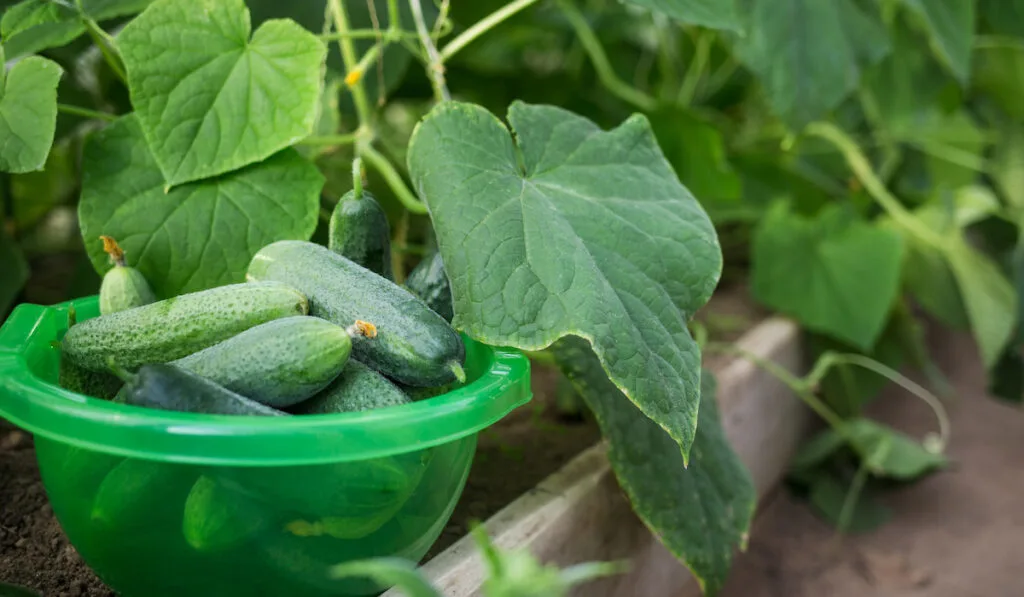
If you have a bigger space on your raised bed, then cucumber is a good choice. It comes in two varieties – the bush and the vining. If your raised bed is small and you’re planning to grow vining cucumbers, you will need to make a trellis for them to grow on.
To plant, make sure that the seeds are six inches apart, with a depth that is no more than one inch. If you’re using a trellis, plant them near the area so they can be trained to grow on the trellis.
A cucumber is 96 percent water, which makes it an ideal vegetable to eat if you want to stay hydrated. You can slice it up and eat it fresh, or it can also be added to salads, cocktails, and pizza.
10. Garlic
A staple in most dishes, garlic is simple to grow in a raised bed, but can bring you lots of benefits. Garlic thrives in a rich, well-drained soil. They need light and an open-textured growing medium which a raised bed can give.
To plant, break open its bulb and split the cloves. Then, plant them individually with a pointy end up. Grow them around November when the weather is cool. Wait until spring when they are ready to be harvested as new bulbs.
Garlic can be a flavoring to lots of dishes, including sauces, marinades, stews, and soups. They can also be added to your bread, or can be used for a more flavorful steak.
11. Kale
Like garlic, kale also thrives in cool weather. Therefore, you may need to strategically plant it in an area where it can be shielded from the afternoon sun.
Plant kale at about a square foot apart. However, if you are planting them using seeds, simply sprinkle a few seeds in the middle of each square foot.
Once they begin to grow, you can remove the weaker seedlings, or those that grow more slowly than the others.
Kale is a leafy green that can be added to your breakfast smoothie, salad, pizza, or to your favorite soup.
12. Lettuce

Lettuce makes an excellent addition to any raised bed. It is a quick-growing crop that thrives in cool weather.
Sow lettuce seeds early in the spring. Water them slightly so that the small seeds won’t be washed away. The warm soil in spring will help the seeds germinate quickly, thus allowing the lettuce to be harvested even before other plants reach maturity.
Plant the lettuce seeds near larger plants, such as peppers and tomatoes. You can also plant some in the corners or awkward spots of the raised garden.
Once they are ready to be harvested, you can either pull the whole plant or just pick individual leaves. If you choose the latter, make sure to get four to five pickings per lettuce.
Aside from being a popular ingredient to salads, lettuce can also be added to your smoothies and soups. It can also be used to make spring rolls and lettuce wraps.
13. Mint
Another quick-growing plant that makes a great choice for raised beds is mint. This popular herb can be raised in an area where they get full sun. Once established, you can harvest them often.
However, it can be tricky to grow mint from seed. It is recommended to ask for some mint plants from your friend, or neighbor, who has the same soil properties like yours.
It is better if you can dig up a square foot size bunch to make sure that they can develop plenty of roots. Water it often and you’ll soon have your own mint plant.
Mint can be added to your cocktails, teas, salads, and yogurts.
14. Onions
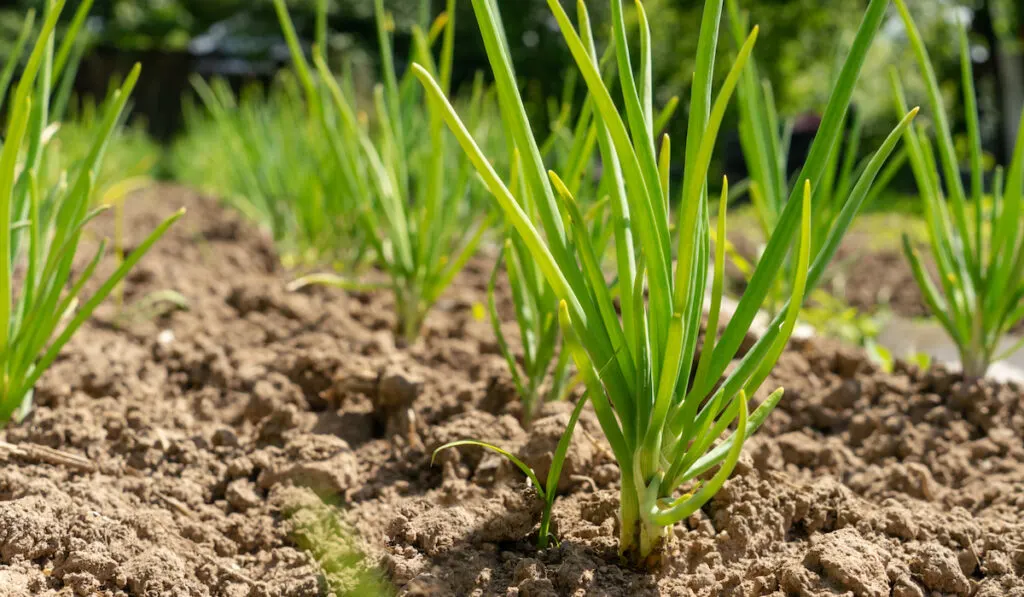
Onions can be used in many dishes which is why it is one of the best vegetables to grow in a raised bed.
Aside from its many uses, onions are easy to plant. Simply buy onion sets and plant the bulbs in early spring. Make sure that only the top of the onion set, or the immature bulb, is visible on the surface of the soil. Plant it with roots facing downwards.
It is important that onions are provided with enough space above and below them since the roots of this crop extend downward.
Even before they are brought to the kitchen, onions can benefit your garden since it serves as a natural pest deterrent in some vegetables.
Therefore, it is suggested to plant it around other crops, such as kale, lettuce, peppers, tomatoes, and cabbage. However, you will have to plant it away from peas and beans.
15. Peppers
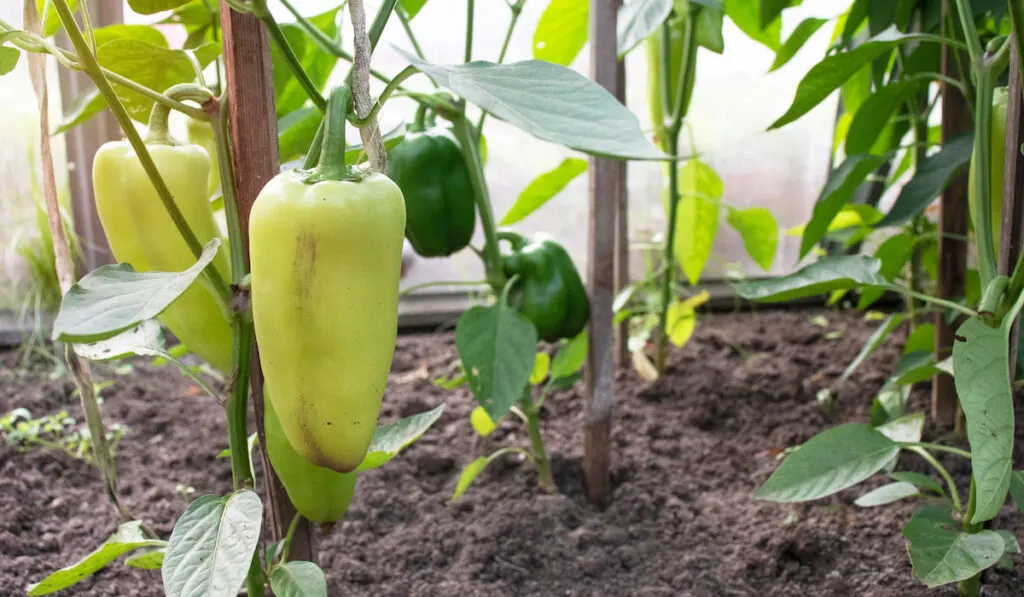
Peppers are low-maintenance, easy-growing crops that can be planted in any area where there is direct sunlight.
If you are going to use seeds to grow peppers, you will need to begin raising them indoors 8 to 10 weeks before the last frost date. This method is a little bit difficult compared to buying started plants from a nursery then transferring them into your raised bed.
To plant, make sure that there is 12 to 18 inches of space per plant. Since their fruits get heavy, you may also need to stake them for additional support.
There are a variety of peppers you can try to grow in your raised garden, including chili peppers and bell peppers.
16. Potatoes
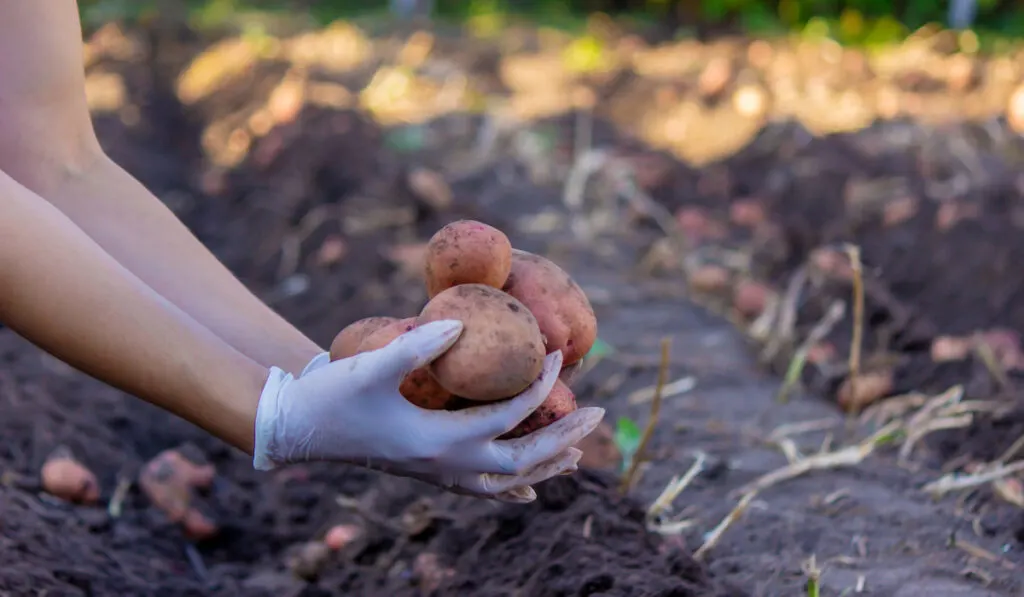
There are a variety of potatoes available, and it is important to know which variety you are planting in order to know their approximate harvest time.
To get the most out of potato plants, start with a potato bed half full then plant your potato seeds about three inches deep and one foot apart. Potatoes will grow better if provided with their own raised bed than having them share space with other vegetables.
Every potato plant produces about three to five pounds of potatoes.
Aside from making french fries, potatoes can also be mashed, roasted, or grilled. It can also be added to stews, pies, and pancakes.
17. Radish
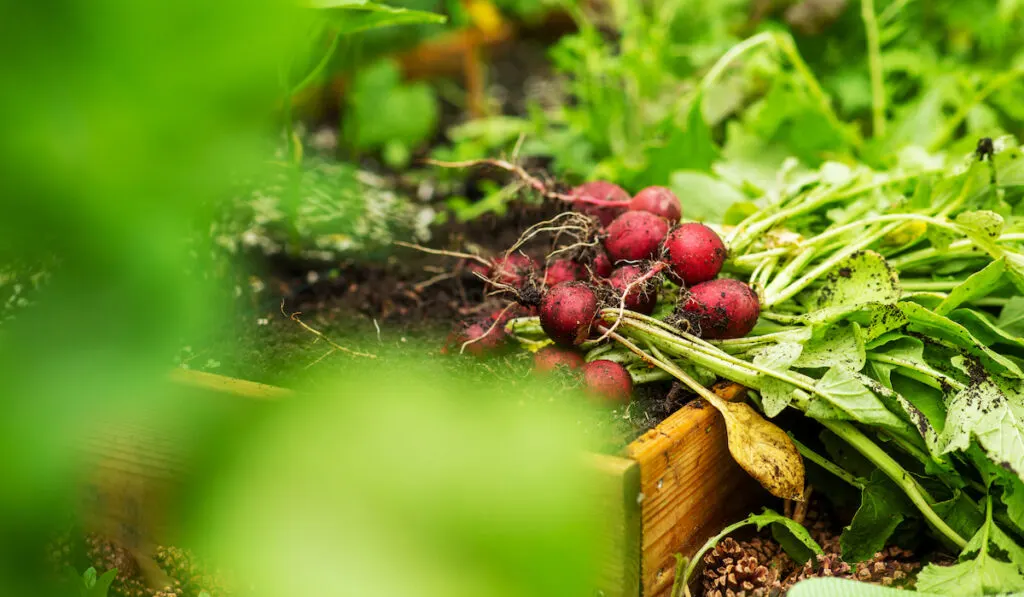
If you want a crop that can give you fast results, then radish is an excellent choice. This crop is one of the quickest growing vegetables out there.
Because radish is a low-maintenance and easy-growing crop, it makes an ideal choice for beginners.
If you want a constant supply of this vegetable, sow radish seeds at regular intervals from March to mid-August. Sow them thinly, about 2.5 cm apart. Make sure to water them lightly so as not to wash away the seeds.
At three to four weeks after sowing, you can already see the rosy-red shoulders of the radish. In 35 to 60 days, they are ready to be harvested.
Radish can be pickled, roasted, or added into your salad and other dishes.
18. Rocket
If you prefer a peppery kick to your regular salad, then rocket should have a space on your own raised bed.
Rockets are easy- and quick-growing plants, provided that they sit on rich soil with plenty of water. They thrive in a sunny spot where they can get direct sunlight.
When it is time to harvest, you can actually control the taste of rocket by choosing when to pick the leaves. Young rocket leaves have milder flavor, while the older leaves taste amazing when cooked.
Rockets can be added to hummus, fritters, salads, pizza, and many other dishes.
19. Spinach
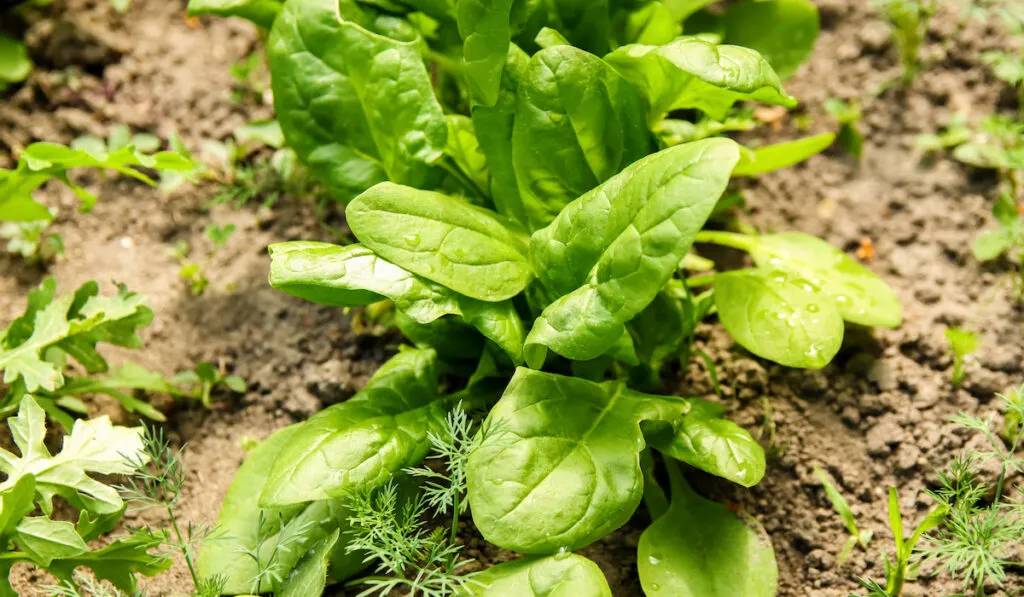
Another vegetable that is quick and easy to grow but yields plenty of leaves is spinach. Spinach is packed with iron and other nutrients which makes it a great addition if you want to eat healthily.
Spinach prefers cooler weather, so it is best to plant them early. Hot weather causes the spinach’s leaves to bolt quickly, which makes its leaves taste bitter.
To avoid this occurrence, sow seeds in light shade during summer, and always keep the soil moist.
Sow spinach into rows with about 12 in. of space, and the seeds are 1 in. apart. Water them gently so as to avoid the seeds from being washed away. Within a week, expect the spinach to germinate.
Spinach can be planted next to other plants, including lettuce and radishes without causing problems. Once it is harvested, use their spot to plant other crops.
You may plant spinach again when the weather begins to cool off, such as in late summer or early fall.
Aside from adding it to your salad, spinach can also be incorporated into dips, and can be used as a stuffing for your salmon dish. They can also be made into soup, or added into pizza, pasta, and creamy chicken dishes.
20. Summer Squash
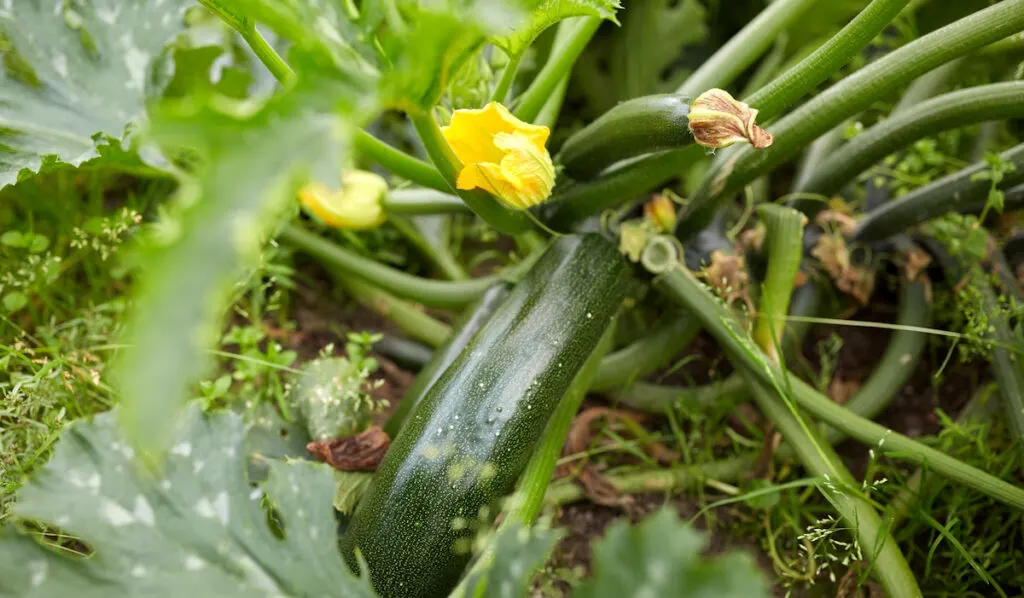
Summer squash yields abundant produce, and it comes in many varieties which makes it suitable in your garden regardless of your raised bed’s size.
If you have a small space, yellow squash and patty pan is a good choice. On the other hand, if your raised bed has trellis, you can choose the vining varieties, such as acorn squash, spaghetti squash, and even small pumpkins.
If you want a bigger variety of squash, make sure that you can provide the fruit with support as it grows. To do this, use an old stocking to form a small hammock which will provide support for your growing squash.
For the plant to have a better air circulation, plant them with enough space so that each plant is able to breathe freely.
Keep in mind that once the weather starts to get humid, summer squash plants may be prone to problems, including downy mildew.
Summer squash can be fried to make fritters and croquettes. You can also freeze it so you’ll have an available squash in winter.
For vegetarians, squash is used to make healthy noodles. There are other ways to use summer squash, such as adding it to your pizza, kebabs, pasta, soup, salad, and more.
21. Zucchini
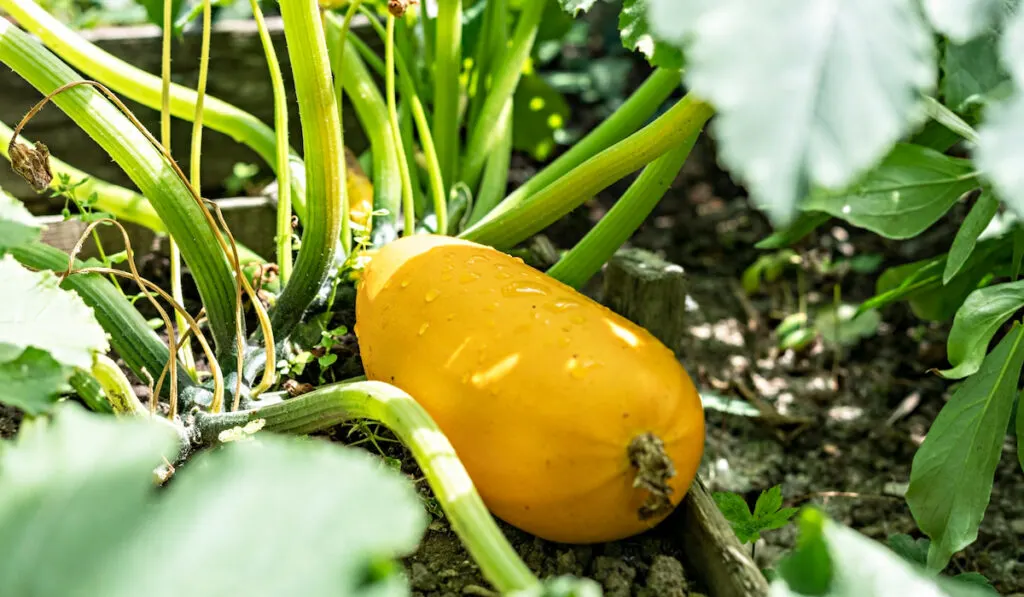
Unlike summer squash, zucchini thrives in hot weather. While the soil is warm, sow your zucchini plants directly into your raised bed. It is also recommended to mix plenty of aged compost to keep the soil loose and open.
Plant zucchini seeds at around three to four inches apart, with a depth of about half an inch. Once established, you can most likely thin them to around six inches apart. Plants should be watered evenly to avoid blossom end rot.
There are several varieties of zucchini that you can choose from. One is the bush variety which occupies less space in your raised bed. The other one is the vining variety which allows you to make use of the vertical space on your trellis if you have one.
If you opt to raise the vining variety, you can allow the vine to grow over the edge of the raised bed. You can also squeeze in other plants if you want.
Zucchinis are best collected once they are three to eight inches long. Although larger zucchinis are still edible, they tend to be less flavorful, and the texture is less palatable.
Like summer squash, zucchinis can also be sliced to make noodles. It can also be baked, fried, or can be added to your salad, veggie rolls, risotto, or even bread.
Regardless of your choice, having a raised bed where you can grow your own crop is definitely worth it once you are able to taste your own, home-grown vegetables.
The best way to determine which vegetables you should grow in your raised bed is knowing which vegetables you and your family enjoy eating.
Resources:
- https://smartpots.com/tired-constant-watering-bedder-solution/
- https://www.waterirrigation.co.uk/how-to-use-soaker-hose
- https://everythingwhat.com/how-do-you-use-a-soaker-hose-in-a-raised-vegetable-garden
- https://christieslandscapes.com.au/do-soaker-hoses-really-work-for-a-vegetable-garden/
- https://www.fromhousetohome.com/garden/install-soaker-hoses/
- https://turfmechanic.com/how-long-to-run-a-soaker-hose-for/
- https://rexgarden.com/using-soaker-hose-raised-bed/
- https://www.gardenstylesanantonio.com/garden-tips-blog/soaker-hoses-good-bad-and-the-ugly/
